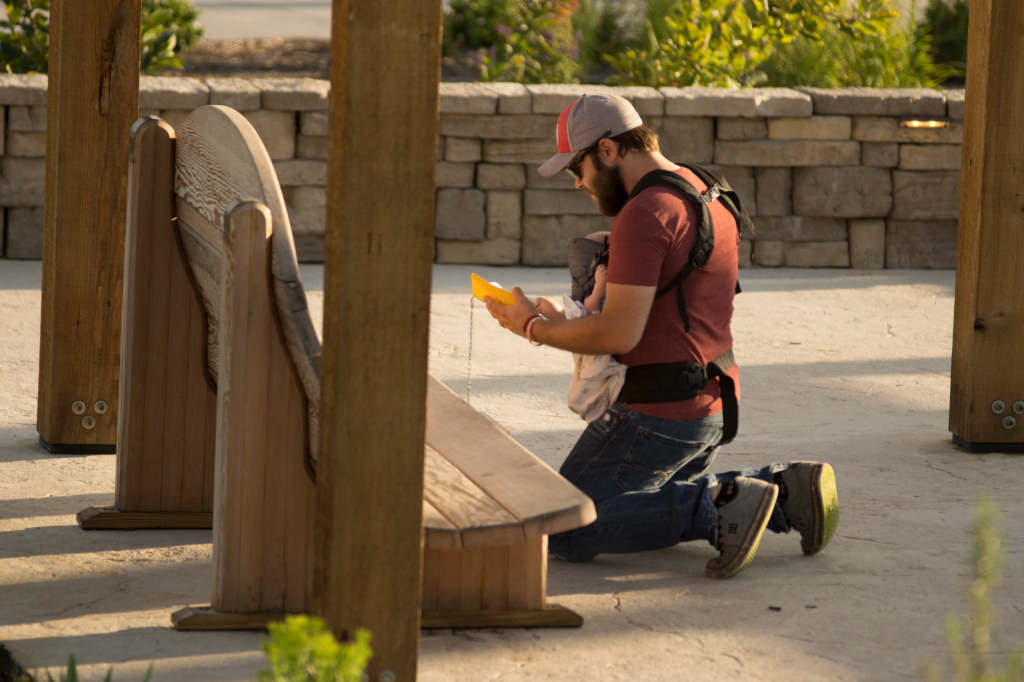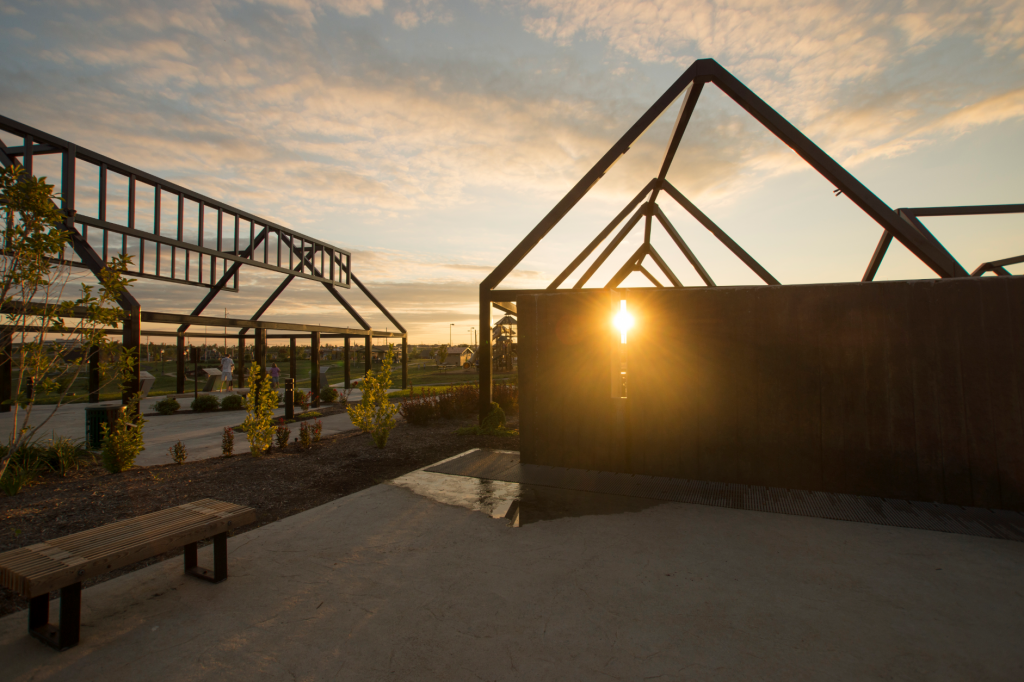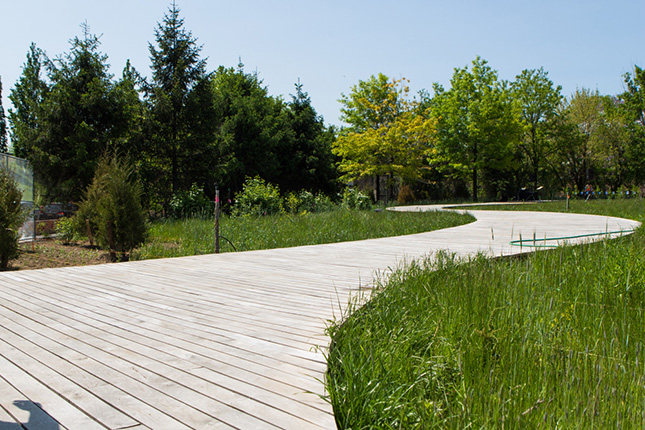A Brooklyn Nature Sacred community space opens to the public.
A stretch of land along the Brooklyn waterfront once supported Native American settlements, 17th century farms, and a final resting place for 19th century naval officers and Marines. In 1926, the Navy moved the 2000 buried servicemembers in the Naval Cemetery to Cypress Hills Cemetery. Over the intervening years, the site was used as a baseball field and eventually closed to the public. It has likely always been home to insects, birds and other pollinators.
In 2014, efforts began to convert this space into a publicly accessible memorial greenspace*. The 1.7 acre green space is now opened to the public for the first time in 90 years.
A circular wooden walkway, stone markers and native wildflower meadows honor the past, present and future. This space is a Nature Sacred program site, designed by a team of landscape architects, researchers and community members to serve the community and scientifically investigate how green spaces nourish the bodies and minds of those who enter.
During the opening ceremony this past Friday, May 20th, Tom Stoner, co-founder of TKF and Nature Sacred, spoke about his vision and hope for the space:
“You can see what nature is going to do here. You can see how people will connect with nature in an intimate way. We live in a time of great stress. When we started this idea 25 years ago, trying to insert back into the city green space and its effect on humans, we didn’t realize we’d live in the kind of stress we live today. Stress has gone up every year for a whole variety of reasons, and therefore the need for a place to reflect, to turn within, especially in the city [is needed]…
These wonderful walkways invite people to wander. And I think they will respect the fact that this was a cemetery. And that people who served our country were once here. A sacred place in a way. I think people will unwind and relax as they walk through it. It has a portal. It has a way of coming in and leaving the secular world, the world we all live in. A place to come in and change your way of thinking. And of course it is in the middle of the city, and people will be surprised by that. It is transformative, [both] spiritually and mentally.”
—Tom Stoner, Founder TKF Foundation
Five years post-disaster, a Joplin Nature Sacred space continues to serve the community.

In May 2011 Joplin, Missouri was struck by an EF5 multiple-vortex tornado. Many of the near 50,000 residents worried how the town would recover financially and structurally. For most, the largest hurdle was how to cope with the loss of life and health among so many. Now five years later, Joplin has rebuilt 90% of homes and businesses. New schools, hospitals and opportunities thrive. Trees, parks and other nearby nature areas provide healing and growth.
A year after the destruction, the city planted 161 trees to honor the lives lost. Cunningham Park served the community well before the tornado, and in 2014 it expanded to include new recreational equipment and a memorial garden dedicated to lives and loss. In 2016, a large green space is in development on the grounds of the former hospital, adjacent to Cunningham Park. An expansive green space, with a memorial garden, walking path, recreational equipment, and green lawns gently remind many of the power nature has in everyday life.
The Butterfly Garden and Overlook memorial garden is part of the Nature Sacred program, with a team of research scientists, designers and community leaders studying how nature spaces provide a source of resilience and strength in post-disaster communities. Greening in the Red Zone, authored by team member Keith Tidball, provides compelling evidence and history of green spaces in disturbed zones.

The memorial space hosts a butterfly garden, three house-shaped steel frameworks that represent lost homes, a reflection pond, a memorial timeline and plaque dedicated to adults and children lost in the storm. The space also provides elements of an Open Space Sacred Place, including a bench and community journal. A large sculptural ring, made to resemble a wristband worn by volunteers, bears the inscription, ‘The Miracle of the Human Spirit.’
A visitor interviewed for an anniversary article shares her experience as her two young sons play on the sculpture: ‘It’s very relaxing here. Every time I come here, I think of the tornado. … Some things are better. But it still takes healing.’ A community bench journal, one of the Open Spaces Sacred Place elements, reveals the thoughts of a visiting woman suffering bouts of paralysis, ‘Just like when the storm hit all those years ago, I am given a new beginning. I am reminded today of how many strifes we must overcome in our life. This park reminds me that anything is possible.’ ”
Her thoughts of a new beginning reveal the experience and healing possible in open, green spaces throughout Joplin, Brooklyn, and towns and cities beyond.
—–
*
In 2014, Brooklyn Navy Yard Development Corporation leased the former cemetery site to Brooklyn Greenway Initiative (BGI) for the creation of a publicly accessible memorial open space. Partial funding for site design and creation, an educational program between The Horticultural Society of NY and The Green School and on-site research was awarded to BGI through TKF’s National Nature Sacred grant program.

